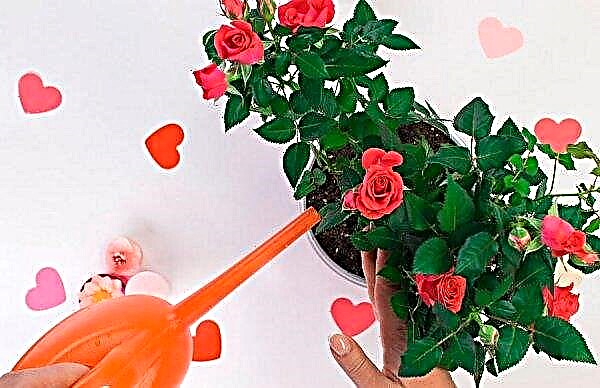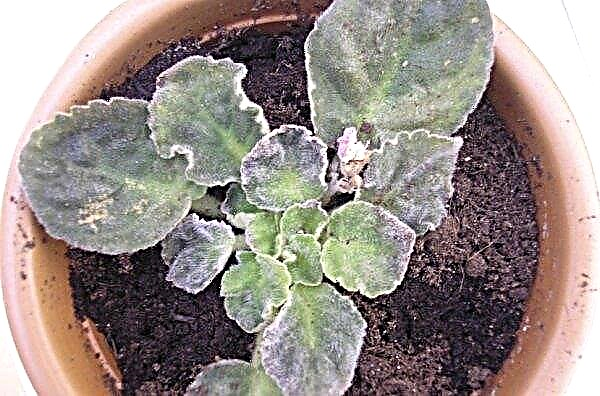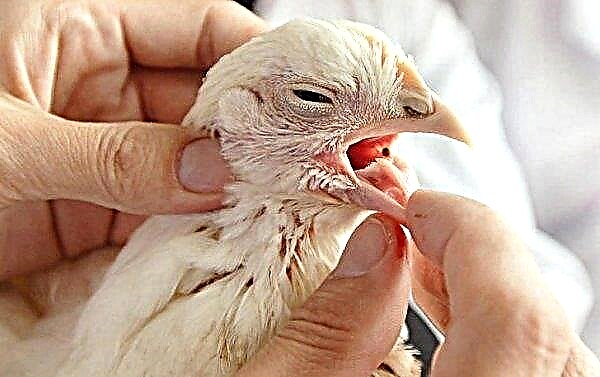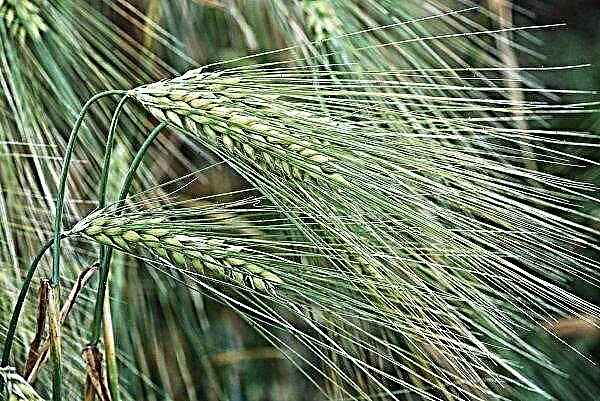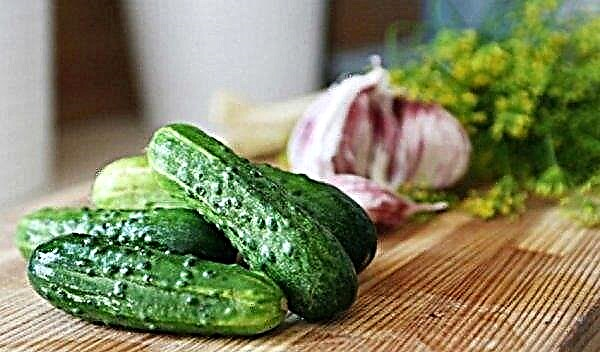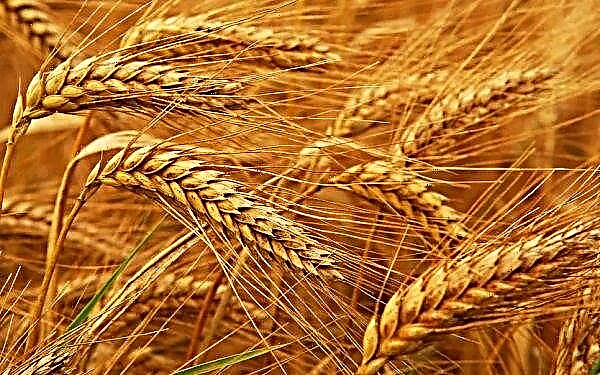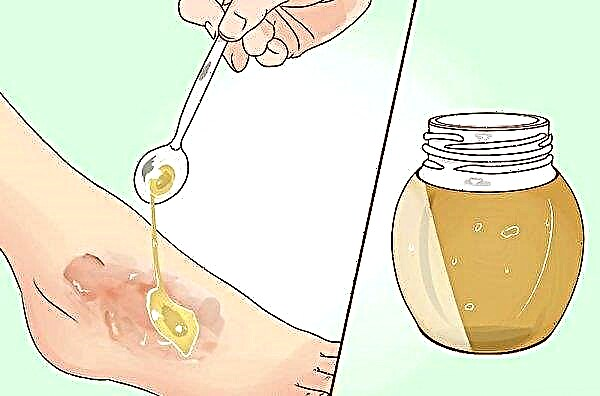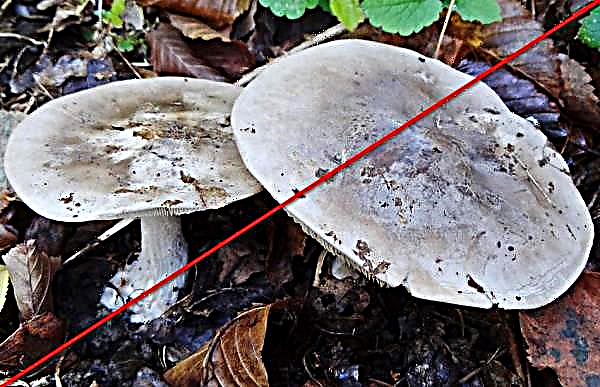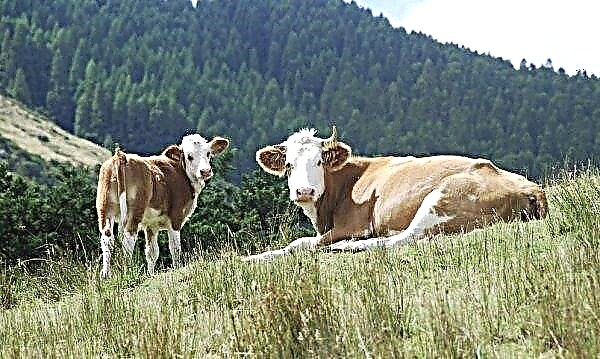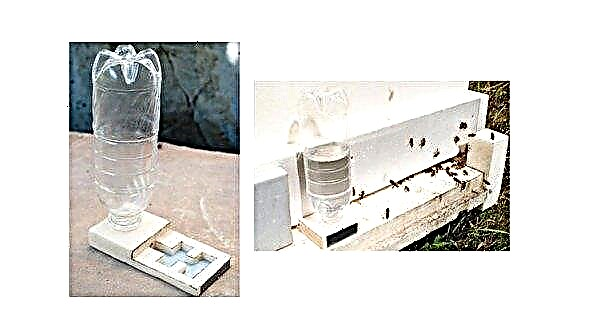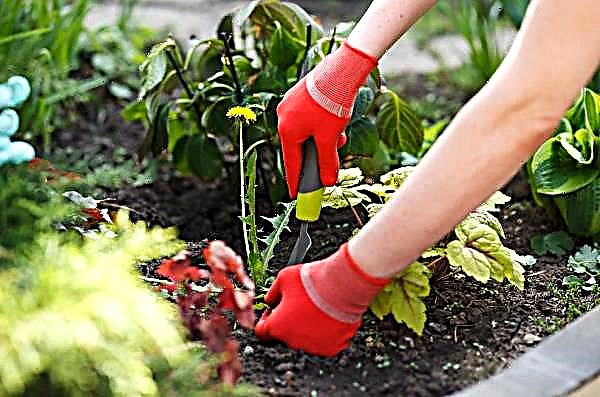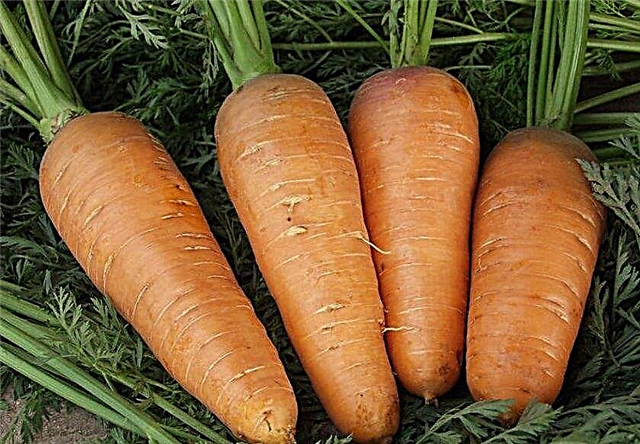Juniper Cossack is a well-known representative of coniferous shrub plants, which belongs to the Cypress family. This species includes the Blue Danub variety, which has gained great popularity among Russian plant growers. Juniperus sabina Blue Danube is a decorative bush and is actively used in landscape design.
Botanical Description
The variety under consideration has many similarities with other representatives of the Cossack juniper. Despite this, Blue Danub (Danau) has pronounced specific features.

Botanical description of the Blue Danube variety:
- Bush. The plant can reach a height of up to 1 m, and a width of 2-2.5 m. The bush is lush, fast-growing.
- Crohn and branches. Branched, creeping, has a bonfire shape. An adult bush can form a broad, hipped crown. The branches are sprawling and dense, the upper tier is distinguished by more elevated branches up or diagonally, the lower ones - creeping. The red-gray smooth bark has a slightly cracked texture. Young shoots are characterized by curved ends directed upwards.
- Needles. The plant is covered with evergreen small needles. Young specimens are distinguished by pointed and soft needles, and in adult bushes it is mainly scaly. Color may vary depending on the season: in summer and autumn, it has a green-blue hue, and in winter and spring it is dark purple. Rubbing needles, you can feel a pronounced unpleasant odor.
- Fetus. The plant is covered with drooping pine cones - but only on female specimens. They are small and spherical in shape. Size - 5 (6) mm × 5 (6) mm. They are distinguished by a dark blue tint and a grayish coating. Young cones have a white-green or bluish color. Ripening time - within 2 years, in the middle of autumn.
- Root system - superficial, branched, characterized by numerous lateral processes.

The plant in question is also known as the Blue Danube. This is because this variety has a growth feature that is visually similar to the course of the river, its smooth surface - the bush grows in breadth and has an annual growth of 0.2 m.
Video: Juniper Cossack Blue Danub
Landing
In order for the plant to fully develop, and the gardener does not have agrotechnical difficulties, it is necessary to adhere to certain rules for planting Cossack juniper Blue Danub, the main of which are:
- acquisition of high-quality planting material and its processing;
- seat selection;
- the formation of the landing pit;
- preparation of soil nutrient substrate.
One of the important points in the organization of planting is the selection and preparation of seedlings. When buying Blue Danube varieties in a nursery or in a store, you need to pay attention to the health of the root system - there should be no damage, traces of fungus or rot. The needles should have a healthy appearance and hold well on the branches, not crumbling.Important! For good survival of the Cossack juniper Blue Danub, it is recommended to carry out the first post-planting moistening with warm water.

It is recommended to carry out preliminary procedures before planting - immersion of the root system in the Kornevin solution to stimulate the strengthening and healing of the plant rhizome, treating the seedling with substances to improve plant growth after planting (for example, Epin). The planting process is carried out according to the following recommendations.
The step-by-step instruction looks like this:
- Drainage is poured into a 1 × 1 × 1 m planting hole, and a nutritious soil mixture is placed on top.
- Perform a vertical installation of the seedling in the Central part of the planting pit.
- The seedling is covered with soil to the level of the earth's surface, followed by tamping of the soil layer. The root neck should not be deepened.
- Watering is carried out with 15–20 liters of water.
- The trunk circle is mulched with a five-centimeter layer of a mixture of peat and sawdust.

Juniper Care
The considered plant variety can be considered picky to the growing conditions. Despite this, it is necessary to perform basic care for the Blue Danube bush so that the culture does not lose its decorative effect.
Important! Like many other ornamental crops of the Cypress family, Blue Danub positively responds to the needling sprinkling procedure, which is carried out in the summer before sunrise or after sunset. This time is considered safe for the plant, because excluded the possibility of sunburn on the crown of the Cossack juniper.
Basic agrotechnical requirements:
- moderate watering (up to 3 times during the summer season);
- top dressing;
- harrowing the soil (if necessary);
- trimming and shaping;
- preparation for wintering;
- the fight against diseases and insect pests.
 Fertilizer is necessary for the bush only in the second year of life, since when planting the plant has already received the necessary nutrients, which are enough for the first 12-18 months of growth.
Fertilizer is necessary for the bush only in the second year of life, since when planting the plant has already received the necessary nutrients, which are enough for the first 12-18 months of growth.
The plant especially needs watering in the first 7 days after planting a seedling. 2-3 buckets of water (up to 20 l) will be enough for one bush. In case of hot, dry weather, both young and adult plants need hydration.
Adult specimens of Cossack juniper are recommended to be watered 2-3 times in the summer. This variety of coniferous bush is approved in the second half of spring (closer to May). The procedure involves feeding, for example, "Kemir wagon" in the trunk circle.

Shrub needs loosening or harrowing the soil. Such treatment of the trunk circle should be shallow, since there is a possibility of damage to the root system, which is located in the upper soil layers. This procedure is necessary to improve soil structure and oxygen circulation at the roots.
Preparation for the wintering of young bushes of Cossack juniper is required. To do this, place a layer of peat (10 cm) in the trunk circle. The shrub is covered with spruce, covering garden material. In order for the juniper branches not to suffer from strong winds and snow in the winter, the shoots of the plants are wrapped with rope, pressing them to the trunk.
Shaping and pruning is also a necessary event for Juniper Blue Danub. The sanitary and shaping haircut is carried out for 2-3 years after planting. In the spring, it is necessary to remove dried, deformed and damaged shoots. Formation is usually carried out in mid-spring and in the last month of summer.
Did you know? A study by Russian scientists proves the fact that one hectare of planted juniper is able to clean the air of such a metropolis as Moscow.
The plant in question contains toxic substances, therefore, after cutting, it is recommended to thoroughly clean the tools. Pinching the tips of young shoots contributes to the formation of a fluffy crown. It is recommended to remove no more than 20% of the annual growth. After cutting, the sections should be treated with a healing resin, for example, Zircon.
The fight against ailments is a necessary annual procedure. Prevention and treatment is carried out by treating the bush in the spring and summer with insecticides, for example, Actellic. Juniper diseases can be eliminated by using fungicides containing copper. One of the most popular and effective means against diseases is Topaz.
Breeding methods
Juniper Cossack Blue Danub can be propagated in three ways: seeds, cuttings and layering. The first method requires careful preparation. It is necessary to prepare large containers for stratification in advance. This long process involves keeping the seeds under certain conditions to accelerate their germination. When the formed fruits ripen, they acquire a dark purple color with a glossy finish.

Each cone berry contains a maximum of two seeds. After removing the seeds from the cone, they are immersed for half an hour in a solution of boric acid (0.2 g of powder per 1 liter of water), then washed well. With the first frosts, a stratification procedure is carried out, which lasts all winter.
The preparation and directly the process of seed germination is accompanied by the following actions:
- A special container for germination is filled with a mixture of sand and peat in an equal amount. It is also recommended to bring in the moss-sphagnum purchased in the garden store (according to the instructions on the package).
- A small amount of soil from under an adult juniper bush will serve as a good stimulant for seed germination, so it is advisable to add such soil to the soil mixture.
- Sowing of soaked and well-dried seeds is carried out in October - November. They need to be deepened into the prepared soil by 2-3 cm.
- It is recommended to place the seeds in rows.
- Containers are placed in a refrigerator, cellar or under snow.

In March, the sprouts are planted in open ground. You can ignore the procedure of preliminary aging of seeds in the soil substrate - the sowing of planting material is carried out immediately in the open ground in spring. In this case, the seed will germinate in a year.
The second method of reproduction is by cuttings. It is usually carried out in mid-spring or late summer, thereby not injuring the plant. This is due to the fact that in the spring, the juniper is still in a state of "hibernation", and the movement of juices has not yet begun, and in August there is a stiffening of young shoots.

Cuttings are cut with the bark of the mother bush. Then they are placed in water, and then in a solution of indolylbutyric acid to stimulate root formation. It is recommended to plant cuttings in open ground, deepening them into the soil by 6-7 cm, in cloudy weather, to protect the young plant from sunburn. The future bush will take root in 2-3 months. During this period, the plant requires abundant watering and shading.
The third method is reproduction by layering. This option is carried out during the growing season. To do this, you need to make a small incision with a sharp knife on a young shoot from the lower tier of the crown, after which the branch is sprinkled with a substance for rapid root formation and bent to the ground, well-fortified and covered with soil.Did you know? In Crimea, scientists have discovered a long-lived juniper, whose age is more than 2 thousand years.

Use in landscape design
The variety under consideration is stunted, so it looks great both in a single planting and in compositions with flowers and small coniferous or deciduous shrubs. Many landscape designers like to combine Blue Danub with other varieties of juniper, which are distinguished by various color splashes. Among these plants, you can choose, for example, Curivao Gold or Strictu.
This shrub is usually used for:
- landscaping of slopes;
- creating hedges;
- decorations of heather gardens, terraces, rockeries, rock gardens.
 Often, landscape designers use Blue Danub for landing on rocky grounds or near artificial ponds.
Often, landscape designers use Blue Danub for landing on rocky grounds or near artificial ponds.
The juniper variety Cossack Blue Danube is a small creeping, lush shrub that has an attractive appearance due to its bluish needles. The plant is easy to plant and agricultural, which also played an important role in its popularity among landscape designers.

